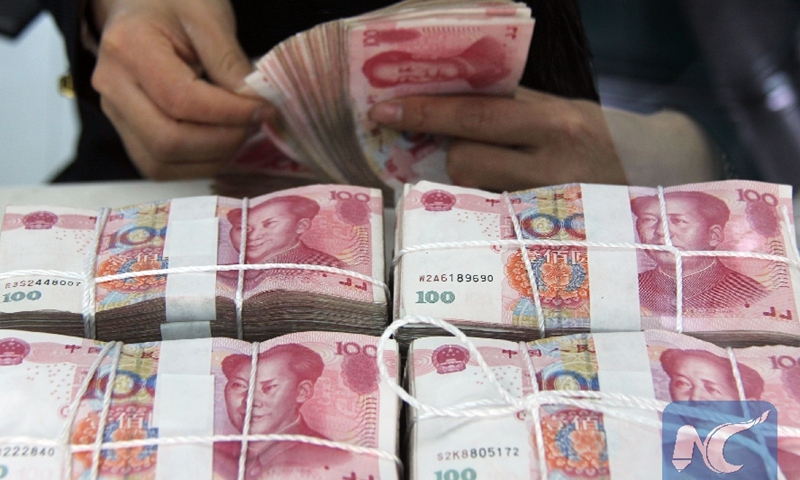File Photo: A worker counts Chinese renminbi banknotes at a bank in Tancheng County of Linyi City, east China’s Shandong Province, April 11, 2013. Photo: Xinhua
The Chinese yuan continued to strengthen against the U.S. greenback, the former attracting attention as a safe-haven asset for global traders who are rattled by possible multiple rate hikes by the Federal Reserve to curb the rapid surge. inflation in the United States.
The exchange rate between the Chinese currency and the US dollar hit 6.32 during Monday’s trading sessions, hitting a record high for the yuan in nearly four years.
The yuan’s central parity rate fell 58 basis points to 6.3401 yuan against the US dollar on Monday, according to the China Foreign Exchange Trade System.
In China’s foreign exchange spot market, the yuan is allowed to rise or fall by 2% against the central parity rate on each trading day.
Since the second half of last year, China’s foreign exchange market has been on an upward trend for the yuan in expectation of an interest rate hike by the Fed to contain inflation.
“As the signal for rate hikes becomes increasingly clear and closer, this points to higher volatility for global financial markets in 2022. Global traders, acting like birds startled by the mere sound of a string of arc, are looking for safe-haven assets,” said Cao Yuanzheng, Chairman. of BOC International Research, told the Global Times on Monday.
The yuan’s gain in value is also being boosted by a steady inflow of foreign capital into China, which will further bolster the currency’s appreciation, according to a research note from the foreign exchange team at CICC Research.
A strong yuan is supported by a robust Chinese economy buoyed by the country’s effective measures to contain the coronavirus, Cao noted. And the currency has helped shield emerging markets in Asia from capital flight, typically seen when developed market interest rates rise.
As China’s exports and imports surpassed $6 trillion for the first time in 2021, a record high, the use of the yuan in trade settlements has also increased.
Payments using the yuan now have a record 3.2% market share, according to the latest data from the Society for Worldwide Interbank Financial Telecommunications (SWIFT), which has proven the yuan’s appeal to merchants.
The influx of foreign capital into the Chinese market is inseparable from the country’s continued efforts to deepen reforms and expand opening-up, especially in the financial sector, experts said.
Over the coming week, the global market will continue to pay attention to the standoff between Russia and Ukraine. As long as there is no critical improvement or deterioration in the situation, the forex market is likely to become less volatile, according to the CICC research team.
Since the recent appreciation of the yuan is caused by multiple short-term factors, it is difficult to predict its long-term trend, and the possibility of future depreciation cannot be ruled out, given the divergence in monetary policies. between China and the United States, the evolution of the pandemic as well as the outlook for Chinese exports in 2022, Cao noted.
With the US central bank all but certain to raise rates, the People’s Bank of China (PBC), China’s central bank, is expected to pursue targeted easing policy to support GDP growth.
The PBC will use a comprehensive set of monetary policy tools to keep market liquidity reasonably abundant and ensure that broad money and social finance growth matches nominal economic growth, according to the PBC Governor Yi Gang.
world times

